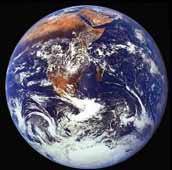Class M: Difference between revisions
From Star Trek : Freedom's Wiki
No edit summary |
No edit summary |
||
| Line 2: | Line 2: | ||
In [[planetary classification]], a '''Class M''' [[planet]] is a 'Terrestrial' planet. They have an age that ranges from 3-10 billion years and a diameter between 10,000 and 15,000 km. They are located within the Ecosphere of a [[solar system]]. A Terrestrial planet is categorized by an abundance of surface [[water]] and an atmosphere high in [[nitrogen]] with [[oxygen]] and trace [[element]]s. Life is often abundant on Class M planets; they contain extensive vegetation, animal life and often have native [[humanoid]]s. | In [[planetary classification]], a '''Class M''' [[planet]] is a 'Terrestrial' planet. They have an age that ranges from 3-10 billion years and a diameter between 10,000 and 15,000 km. They are located within the Ecosphere of a [[solar system]]. A Terrestrial planet is categorized by an abundance of surface [[water]] and an atmosphere high in [[nitrogen]] with [[oxygen]] and trace [[element]]s. Life is often abundant on Class M planets; they contain extensive vegetation, animal life and often have native [[humanoid]]s. | ||
Examples of Class M planets include: [[Earth|Earth (Sol III)]], [[Vulcan (planet)|Vulcan]], [[Cardassia Prime]], [[Bajor]], [[Romulus]] and [[Qo'noS]]. | Examples of Class M planets include: [[Earth|Earth (Sol III)]], [[Vulcan (planet)|Vulcan]], [[Cardassia Prime]], [[Bajor]], [[Romulus]], [[Ferenginar]] and [[Qo'noS]]. | ||
Revision as of 04:11, 9 January 2007
In planetary classification, a Class M planet is a 'Terrestrial' planet. They have an age that ranges from 3-10 billion years and a diameter between 10,000 and 15,000 km. They are located within the Ecosphere of a solar system. A Terrestrial planet is categorized by an abundance of surface water and an atmosphere high in nitrogen with oxygen and trace elements. Life is often abundant on Class M planets; they contain extensive vegetation, animal life and often have native humanoids.
Examples of Class M planets include: Earth (Sol III), Vulcan, Cardassia Prime, Bajor, Romulus, Ferenginar and Qo'noS.
